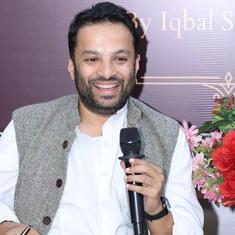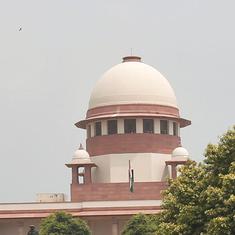A newlywed Indian hung his head low, as his wife, flanked by her relatives, told a police officer that she had been tortured by his family over dowry demands.
It is the most common complaint at a sprawling new all-women police station in Panchkula, a prosperous city in Haryana, which last year launched all-women police stations across its 21 districts to improve how the deeply patriarchal state tackles gender violence.
The 24-year-old woman spoke softly but firmly, buoyed by her two sisters and brother. Countless women in India do not get this far.
Experts agree that there is widespread underreporting of crimes by female victims, especially when it comes to sexual violence. Fears of reprisal, social stigma, poor conviction rates and mistreatment by an overwhelmingly male police force are thought to be holding women back.
This mistrust of the law came to a fore in January 2013. A month after the brutal gang rape of a student in New Delhi that led to widespread protests across India, a government-appointed committee found that the police had created a “subculture of oppression” against rape victims. Cases of the police refusing to register complaints, harassing victims and demanding bribes have been reported nationwide.
In this intimidating landscape all-women police stations promise a space where women can feel safe.
“For a rape victim, going to a station where she imagines so many men present around her in uniform, there are so many personal things which she can’t open up about," said Assistant Commissioner of Police Dharna Yadav, who heads the new all-women station in Gurgaon. "In a police station where she knows she’ll be dealing with all ladies, she is a bit more comfortable.”
‘Populist calling’
Haryana is the latest to scale-up a pioneering experiment that India began in 1973, when the first all-women police station was launched in Kerala.
Today there are more than 500 all-women police stations nationwide, just a tiny fraction of India’s nearly 15,000 police stations. But with a renewed focus on gender violence since the fatal 2012 gang rape there appears to be fresh support for the initiative spanning from Haryana to West Bengal.
But even as a new wave of all-women police stations are opening, there are some questions about whether this is the right way forward.
“It suits a populist calling,” said Devika Prasad from the Commonwealth Human Rights Initiative, a New Delhi-based advocacy group whose 2015 study on women in policing addresses all-women stations. “You can proclaim yourself to be showing measures towards gender equality.”
Prasad added: “But you are actually creating a new layer of infrastructure that you cannot fill,” pointing to the chronic shortage of women in India’s police force. They make up only 6.44% of the total police strength, according to the Bureau of Police Research and Development, far from the 33% target set seven years ago.
For Prasad, women police personnel are key to tackling gender violence, but instead of ghettoising women’s cases into exclusive hubs she advocated boosting the number of women in regular stations and strengthening women-run help desks, the approach used by some states and cities including New Delhi.
“Men also have to be sensitive and responsive to women's issues,” added Prasad.
Challenging patriarchy?
Haryana, home to the latest burst of women’s stations, has long been scarred by deep-seated misogyny. It has the lowest child sex ratio of all Indian states and notorious khap panchayats, or all-male village councils, whose diktats wield considerable control over women and have included so-called honour killings.
It is patriarchal environments such as these where all-women police stations could send the sharpest message, said Sarah Hautzinger, an anthropology professor at Colorado College in the United States.
“In places where women are viewed as appendages of male honour, it can be a very powerful intervention,” said the long-standing researcher of all-women police stations in Brazil.
But she added that to succeed, such police stations need political support to ensure that the women who operate them are given adequate training and resources. In Brazil, the only country other than India where all-women police stations number in the hundreds, Hautzinger said the initiative is now widely recognised for helping combat domestic violence.
A working paper for the World Bank last year found that establishing a women-only police station in metropolitan areas of Brazil was associated with around a 17% reduction in the homicide rate.
It is one of the few studies quantifying the impact of all-women police stations, a data void that experts in India are trying to fill as the debate over the issue grows. The Ministry of Home Affairs is due to publish a long-awaited audit on such stations by the end of the year.
Sexual violence persists
On the ground, women’s groups are concerned that the stations are not reaching some of the most vulnerable victims, in particular sexual violence survivors.
“Women are terrified of testifying,” said Kavita Krishnan, secretary of the All India Progressive Women’s Association. “They don’t feel comfortable coming forward because they are living among their attackers and police are standing with them.”
Two recent cases have raised fresh questions about police failures.
In July, a Dalit student in Haryana said that she was raped by the same five men who had sexually assaulted her three years earlier apparently in retaliation at her pursuing criminal charges against them.
A month later, two other women were gang raped in the state. Following protests against Chief Minister Manohar Lal Khattar referring to it as a “trivial issue” and allegations of police inaction, the state government handed the case to the Central Bureau of Investigation.
Incidents such as these reveal all-women police stations as “a cosmetic exercise", said Krishnan, arguing that they do not address the deep-seated sexism in Indian institutions that prevent women from accessing justice.
Reaching the most vulnerable?
At the Haryana police headquarters in Panchkula, a senior officer then overseeing the women’s police stations admitted that they were at a nascent stage.
“They’re not perfect right now,” said K Selvaraj. “But the aim is to empower women, to make them more confident to approach police without hesitation.”
The Haryana Police would not provide a breakdown of cases registered by the all-women police stations but Selvaraj said most complaints were about “matrimonial disputes” – anything from the most grievous domestic violence to reports of extra-marital affairs.
“Our primary objective is to ensure matrimonial harmony,” Selvaraj emphasised. “A criminal case is the last resort.”
For some experts, a focus on salvaging family ties can sometimes be a barrier to justice.
“Women don’t usually come to the police station after just one incident,” said Balwant Singh, from the Tata Institute of Social Sciences, whose research focuses on gender crimes. “The focus should be on stopping any violence and what the woman wants.”
He added that a perception of women’s stations as a place to solve marital problems might be preventing victims of sexual crime from coming forward.
In Ambala, a city 41 km from Panchkula, Assistant Commissioner of Police Pankhuri Kumar said outreach work was helping her all-women police station expose more sensitive issues such as incest and rape within extended families.
A major challenge is unravelling fact from fiction, said Yadav, head of the Gurgaon all-women police station. Parents, for instance, are known to file false accusations of rape against men their daughters have eloped with as older generations resist changing social mores.
“Still, even if in a 100 we are getting five genuine cases, that makes it worthwhile,” said Yadav. “That means people are coming up.”
Preeti Jha is a freelance journalist. Her Twitter handle is @PreetiJha.










